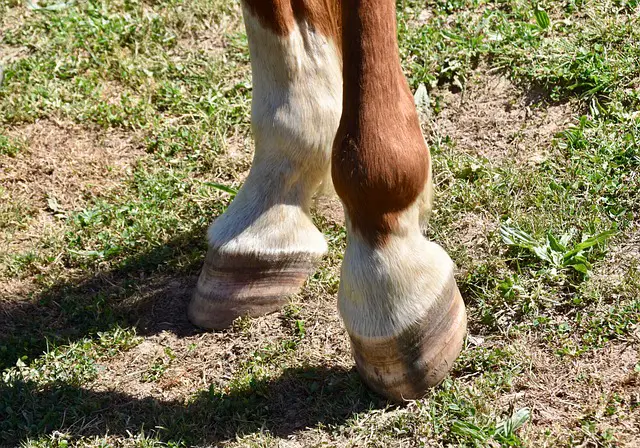Last Updated on March 11, 2022 by Allison Price
Seedy toe is a common condition in horses’ hooves. It can be best described as a fungal infection that enters the white line through which it has been weakened by excessive hoof growth or subclinical laminitis.
It is most common in the toe area. However, it can also affect other parts of the hoof wall.
The fungi or bacteria can enter the soil from any area where the integrity of the whiteline has been compromised (stretched, punctured). They thrive in the dark and damp conditions and eat the hoof wall’s inside. A small amount of damage can be hidden in the hoof wall, and can lead to chronic lameness.
Because the primary infection is often fungal, consistent treatment is necessary to restore hoof health.To get rid of the ‘crumbly black’ residue left by seedy toe, clean the area.

To open up the infected area to light and prevent dirt from being trapped, it is important to trim the hooves of your horse.
Ask a hoof specialist if you’re unsure about how to trim your hoof.
The next step is to use an anti-microbial agent once or twice per week to soak your hoof. Milton nappy washing or its generic counterpart (Black & Gold, Home Brand), which has the same chemical components and concentrations as Milton, is ideal at a ratio 1:10 (9 parts water). I make a 2 litre batch using 200ml Milton and the rest of lukewarm water.
Many bleaches use the exact same chemical (sodium Hyperchlorate), but in different concentrations. It is easier to use the “Milton”, than to calculate the correct bleaches dos rates.
You can use a hoof-soaking boot, or a section from an inner tube that has been cut in half after the hoof is in and tied around your pastern.
After thoroughly cleaning the affected area with a wire brush, a sharp knife, or nail to remove all dirt and debris, you can put on the hoof boot and pour enough solution into it to cover the entire foot.Tyre inner tubes make durable soaking boots – click the image to see more on hoof pathologies.
After 10 minutes, drain the boot and then add fresh solution. Repeat this process twice more after ten minutes, so that the total soak time is 30 minutes.
Spray the affected area with a 1:10 Vetadine solution (9 parts water). Vetadine is an inexpensive form of tamed, iodine (betadine), that can be purchased as an animal wash at your vet or produce shop. It is also the easiest way to ensure the correct dosage.
If it is a severe infection, you can spray Vetadine twice daily. Otherwise, it should be used as often as possible during soaking.
Peter Laidely, Hooworks Australia has used this method with great success. People who use pure Formalin or Copper Sulphate could poison their horses, he says. The bacteria that reaches the horse’s bloodstream is living and can absorb the chemicals into the bloodstream.

